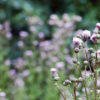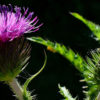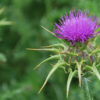Canada thistle (Cirsium arvense) is a widespread invasive weed found in all parts of Clackamas County. Unlike the many native thistles found in Oregon, Canada thistle can quickly overrun an area and displace native plants, reduce agricultural yield, and create problems for grazing animals when they infest a field or pasture. They also cost a […]



